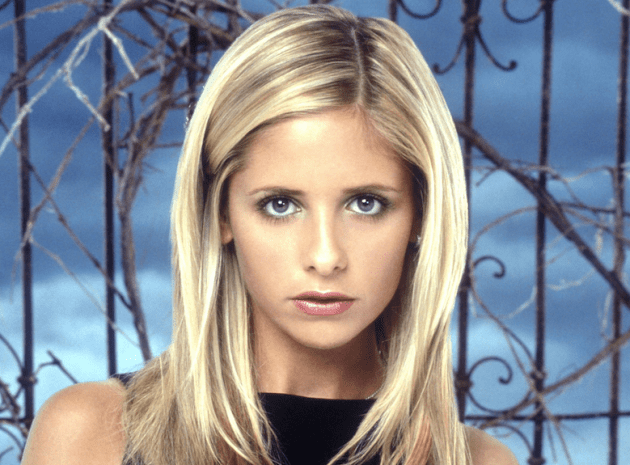Buffy the Vampire Slayer turned 20 yesterday, which will make millennials feel as old as the actors who supposedly passed for teenagers back then. When Buffy came out I was eight. At first I was hooked by the horror aesthetic. Later I began to appreciate how it dealt with adolescent crises through supernatural allegory. But only now do I realise how lucky I was to have grown up with an empowered feminist to look up to (and have my first crush on).
For those who didn’t watch Joss Whedon’s show between 1997 and 2003, Buffy Summers (Sarah Michelle Gellar) is a popular cheerleader type who falls in social status after she finds out she is the Chosen One: i.e, the only girl in the world with the power to fight various demons. After being expelled from her old high school ostensibly for killing vampires, she arrives in Sunnydale, which happens to be on a ‘Hellmouth’: somewhere with a higher evil count than anywhere else in California. But she must also contend with the usual 90s high school obstacles: bullying, dating, peer pressure.
There is a tendency now to see it as the beginning of the television renaissance that culminated in The Sopranos, Mad Men, The Wire etc. But its most valuable innovation was to place an ordinary-seeming yet literally empowered teenage girl at the heart of a show that could appeal to all genders. There was no one quite like Buffy Summers at the time – apart from perhaps Xena, Warrior Princess, but she wore a metal bikini. Buffy saved friends who were being groomed by demons. She beat up men who wanted to attack her.
In the second series, on her 17th birthday, Buffy loses her virginity to Angel, a 245 year-old vampire who, unlike his compadres, has a soul. But after he gets his ‘one moment of true happiness’ with the heroine he not only doesn’t call her: he attempts to kill her friends.
So thank god for Xander Harris, played by Nicholas Brendon. He is Buffy’s funny, dorky friend, her fiercest male ally: he brings her back to life when she dies (twice). He’s also a stand-in for young viewers’ hopeless yearnings for the Slayer herself. Throughout the show Buffy educates him about boundaries. In an early episode he falls in with bullies, wears dark clothes and oversteps the mark with Buffy. ‘It’s devastating,’ says Giles (Anthony Stewart Head), her mentor. ‘He’s turned into a 16-year-old boy. Of course you’ll have to kill him.’
Xander’s saving grace is that he has been possessed by a malevolent hyena spirit. Later his reckless spell-weaving ushers in a discourse on consent. Intense for a supernatural bit of fun. But then, this was how Buffy attracted an audience who didn’t go in for goblins.
Growing up in Newcastle, as many of my peers were putting topless pictures on their bedroom walls, the most sexualised image I was allowed was a poster of Buffy. For my second-wave feminist mother, who approved of the show, this was acceptable. I had no idea that the show itself was more subtly schooling me. Buffy was the first teen show to feature a lesbian main character – and it didn’t labour the point or exploit it or burden her with that single trait. It was also one of the first things I had seen to feature a straight man who wore black nail varnish and could still be attractive.
Other contemporaneous shows with female leads don’t hold up so well. Over the last couple of Christmases my parents and I have been labouring over a box set of Ally McBeal. It is frankly embarrassing to see how badly it has dated. Buffy really was the pin-up of the future: a pin-up for a new millennium. Perhaps this is why her creator has only recently had a blockbuster success with his Avengers films. She’s a natural ancestor – and sadly, in some ways, still superior to – the arse-kicking heroines of today. It’s hard to imagine Jennifer Lawrence’s Katniss Everdeen in the Hunger Games films, or Netflix’s Jessica Jones, without Buffy coming first. And for many millennial women and men, it’s impossible to imagine growing up without her.






Comments